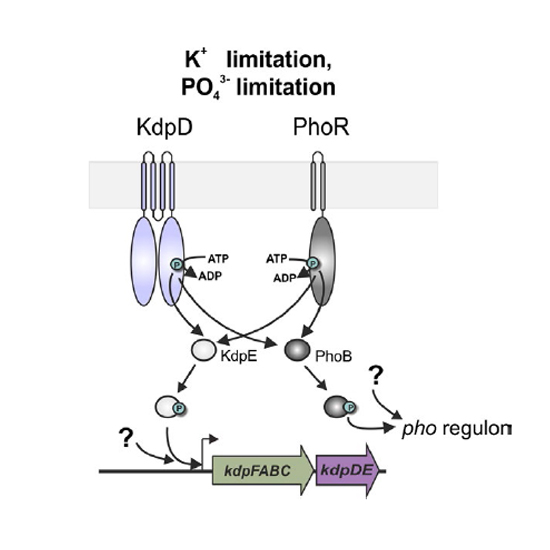Revisiting regulation of potassium homeostasis in Escherichia coli: the connection to phosphate limitation
17-Jan-0207
MicrobiologyOpen, Volume 6, Issue 3, e00438, DOI: 10.1002/mbo3.438
MicrobiologyOpen, online article
Two-component signal transduction constitutes the predominant strategy used by bacteria to adapt to fluctuating environments. The KdpD/KdpE system is one of the most widespread, and is crucial for K+ homeostasis. In Escherichia coli, the histidine kinase KdpD senses K+ availability, whereas the response regulator KdpE activates synthesis of the high-affinity K+ uptake system KdpFABC. Here we show that, in the absence of KdpD, kdpFABC expression can be activated via phosphorylation of KdpE by the histidine kinase PhoR. PhoR and its cognate response regulator PhoB comprise a phosphate-responsive two-component system, which senses phosphate limitation indirectly through the phosphate transporter PstCAB and its accessory protein PhoU. In vivo two-hybrid interaction studies based on the bacterial adenylate cyclase reveal pairwise interactions between KdpD, PhoR, and PhoU. Finally, we demonstrate that cross-regulation between the kdpFABC and pstSCAB operons occurs in both directions under simultaneous K+ and phosphate limitation, both in vitro and in vivo. This study for the first time demonstrates direct coupling between intracellular K+ and phosphate homeostasis and provides a mechanism for fine-tuning of the balance between positively and negatively charged ions in the bacterial cell.











